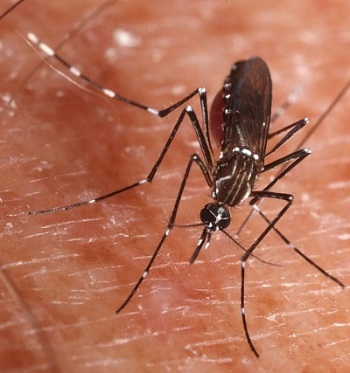More and more animals, plants and microorganisms are being taken from their original habitats and transported around the globe by humans – consciously and unconsciously. This phenomenon known as biological invasions cause many environmental and socio-economic impacts. Invasions by alien species has a global annual cost of at least USD 162 billion dollars. "Infectious diseases caused by pathogens and parasites share many similar features with biological invasions. However, while infectious diseases have so far primarily been studied by medical scientists, biological invasions have been mostly studied by ecologists. Thus, there is a need for stronger collaboration which would benefit both disciplines", explains Professor Montserrat Vilà, researcher at the Estación Biológica de Doñana (EBD-CSIC) and lead author of the new study.
In a globalized world, the emergence and spread of many human infectious pathogens are quintessential biological invasion events. Some alien species themselves contribute to the emergence and transmission of human infectious pathogens. For instance, alien mosquitoes are important vectors for diseases such as Dengue fever and Zika, while many alien vertebrate pets can transmit salmonellosis, herpes, rabies or dermatitis.
The researchers analysed the fundamental concepts in invasion biology and epidemics, and found many parallels. Propagule pressure, species traits, biotic interactions, eco-evolutionary experience, and ecosystem disturbances foster both biological invasions and the emergence of novel infectious diseases. "For instance, urban encroachment into pristine habitats brings species living there into close contact with humans. This provides ample new opportunities for pathogens to switch their host to humans, or for alien species to colonize disturbed habitats", says Dr Belinda Gallardo, scientist working at the Pyrenean Institute of Ecology (IPE-CSIC) and senior author of the study. Similarly, the global trade and commerce have established a dense transportation network that allows pathogens and alien species alike – to travel around the world in short times.
One biosecurity and interdisciplinary collaboration is needed to forecast epidemics and biological invasions
The researchers recommend that integrated approaches that take into account the health of humans and that of animals, plants and the environment are urgently needed for preventing future pandemics and the spread of alien across the globe. This One Biosecurity perspective –builts on the insight that natural ecosystems are irreplaceable.
The scientists conclude that many forecasting and management tools used to address epidemics could be applied to biological invasions and vice versa. Thus, the researchers advocate for increasing cross-fertilization between both disciplines to improve prediction, prevention, treatment, and mitigation of invasive species and infectious disease outbreaks, including pandemics.
Read press release (Spanish) here.
Reference:
Vilà M, AM Dunn, F Essl, E Gómez-Díaz, PE. Hulme, JM Jeschke, MA Núñez, RS Ostfeld, A Pauchard, A Ricciardi, B Gallardo. Viewing emerging human infectious epidemics through the lens of invasion biology". BioScience DOI: https://doi.org/10.1093/biosci/biab047
https://academic.oup.com/bioscience/advance-article-abstract/doi/10.1093/biosci/biab047/6274821?redirectedFrom=fulltext








 ¡Abierta convocatoria para proyectos de investigación en la ICTS- Doñana!
¡Abierta convocatoria para proyectos de investigación en la ICTS- Doñana!


